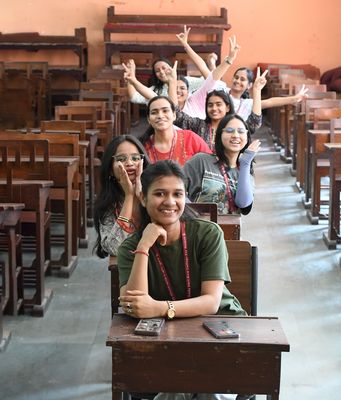THE BOAT RACE, as it is popularly known, is a sporting event on the Thames between teams representing Oxford and Cambridge Universities. It began in 1829 and has been an annual event since 1856. Both sides have had Olympians in the eight-seaters. Though the boats are called eights, they carry nine—counting the coxswain, who steers.
But, IIT-Roorkee cannot have a boat race with any other Indian Institute of Technology, because they are the only IIT with a boat club. Who would have imagined that an IIT in landlocked Uttarakhand would have a boat club! In the images on the IIT-Roorkee site, I saw students in sculls of varying sizes.
IIT Roorkee’s parent institution was founded in 1847, and its birth is tied closely to the construction of the Upper Ganga Canal, which was designed to combat water scarcity in northern India. This makes IIT Roorkee Asia’s oldest engineering college. The boat club itself was born in 1876, which makes it older than publications such as the National Geographic magazine and the Malayala Manorama—both founded in 1888.
Principal Correspondent Abhinav Singh and Photographer Kritajna Naik K. travelled to the campus to bring you this week’s cover story, THE WEEK’s annual special on India’s best colleges. It is backed by THE WEEK-Hansa Research survey that lists India’s best colleges across subjects and regions. Then there are interviews with Prof Shireesh Kedare, director, IIT Bombay, and V. Kamakoti, director, IIT Madras.
Abhinav also observed that India’s best colleges are empowering students to contribute to nation-building. For example, the students of St Stephen’s College, Delhi, are mentoring schoolchildren in Tamil Nadu through videoconferencing. The programme kicked off with a meeting between mentors and mentees in Delhi.
And there are shades of nation-building. The ladies of Lady Shri Ram College for Women have kept Delhi University’s Green Cup for 28 consecutive years by being the cleanest campus in the university. It also has the largest number of differently abled students in the university.
Even as we talk about nation-building, India is yet to recover from that heartbreaking moment in Ahmedabad. AI 171’s crash has left families heartbroken from Kangpokpi in Manipur to Pullad in Kerala. This week, Senior Special Correspondent Nachiket Kelkar looks at the disaster and Captain G.R. Gopinath joins us in that endeavour. These are still early days and we must be patient while the Directorate General of Civil Aviation takes forward its probe.
Senior Special Correspondent Kanu Sarda looks at the controversy surrounding Justice Yashwant Varma, and how the focus now is on an institutional confrontation between the judiciary and the executive.
The other big article in this edition is the crisis in West Asia. Dr A.K. Ramakrishnan, formerly of the Jawaharlal Nehru University, our columnists Anita Pratap and Resident Editor R. Prasannan have weighed in on the issue.
While it all seems so far away, it is closer than we think it is. India had dreams in Haifa Port, Israel. And, in Chabahar Port, Iran. And through the Straits of Hormuz flows India’s energy security and exports. If oil prices go up, fertiliser prices go up, trucking rates go up and food prices go up.
And, every Indian’s wallet gets hit.


